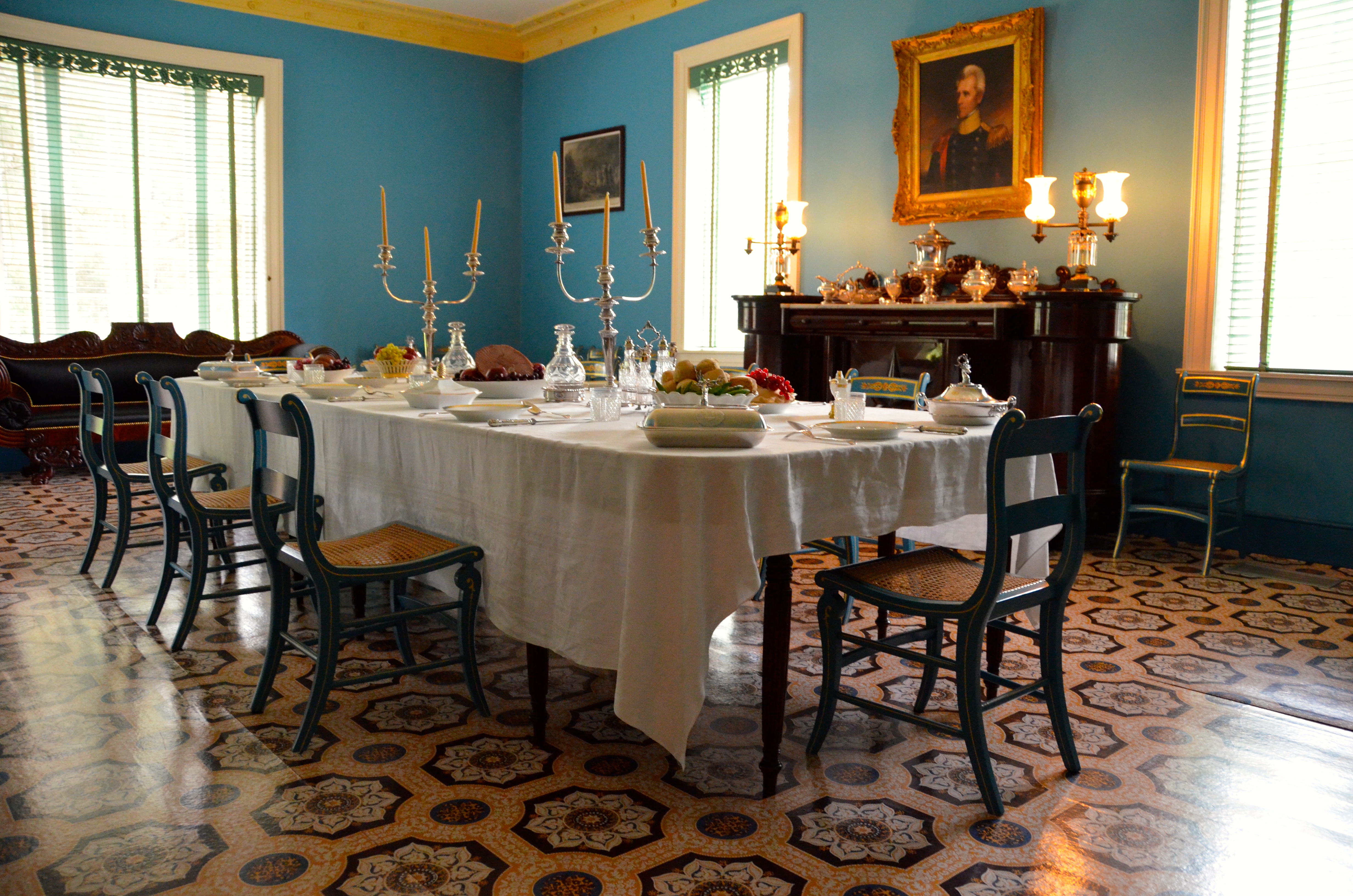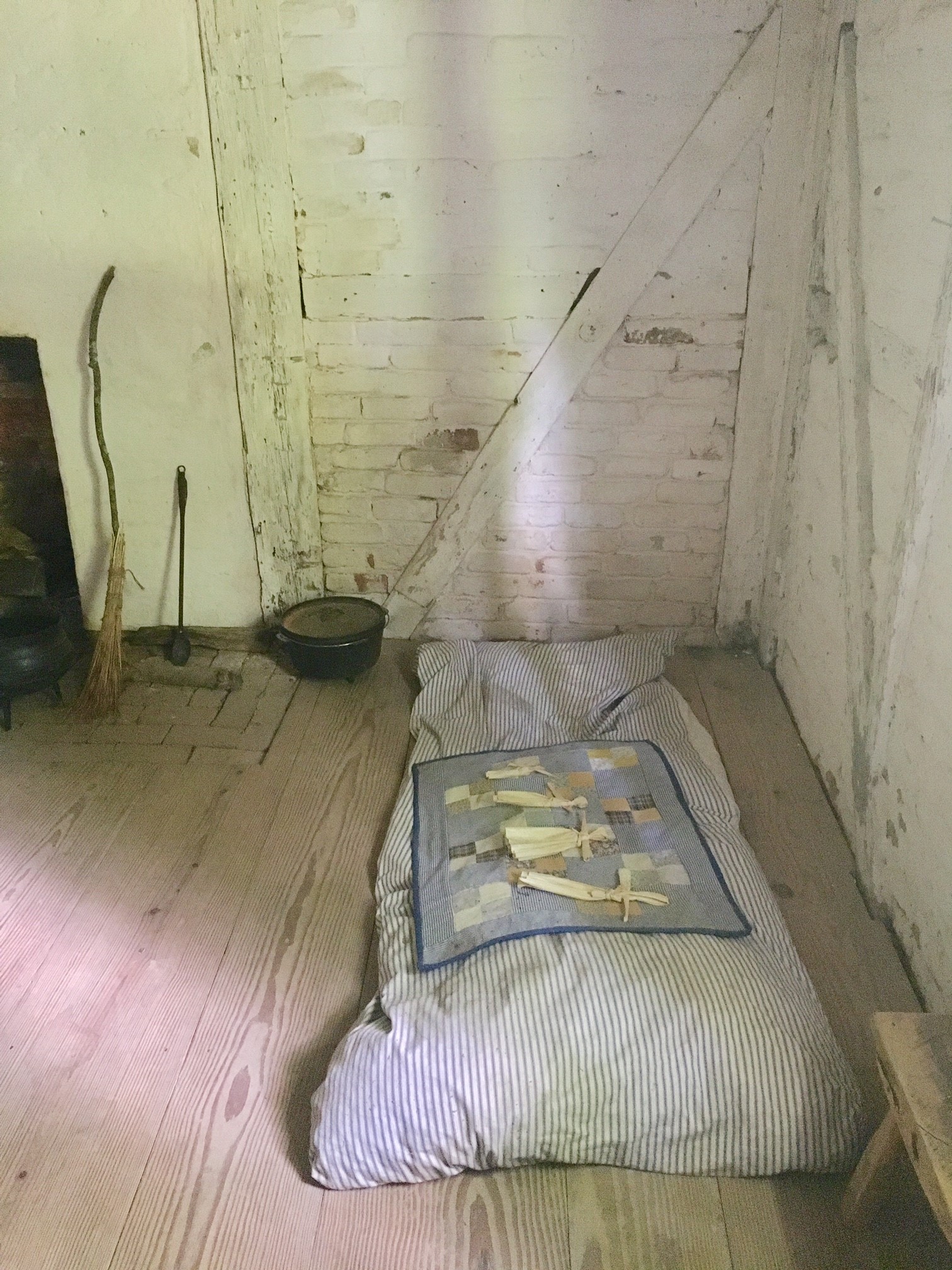What is the Purpose of an American Museum in 2017?
On our whirlwind trip of the American South, the WPAMC fellows visited a variety of museums that were aimed at a range of audiences. Some, such as the Hermitage, catered to more conservative visitors, while others, such as Historic Stagville, attempted to engage those interested in learning histories that challenged America’s metanarrative.
After returning to Delaware I found myself focused on the question of what is the purpose of an American museum in the Trump Era? We are living in a time in which an “honest” telling of history is hard to find. Museums possess the unique ability to shape a history that the public believes they can trust. However, not all of the museums we visited presented a balanced/thoughtful/complete telling of our nation’s history.
The Dining Room at the Hermitage.
At the Hermitage, the site of Andrew Jackson’s Nashville home, Jackson is touted as the “People’s President.” On our tour, his role in the Indian Removal Act of 1830- that violently forced over 40,000 Native people from their land in the Southeast of the United States- was mentioned only briefly in a video played in a room off of the lobby. The video primarily centers on Jackson’s rags to riches story from an orphan to an influential American president.
The museum deals with their human subject with considerable caution, keenly aware of the desires of their primary audience to see him as a role model. The complexity of Jackson is acknowledged without engaging visitors in a perhaps uncomfortable, yet important conversation about his checkered legacy. Instead, on our tour, we admired his living conditions, and were told about significant moments in Jackson’s life such as the death of his wife Rachel.
The Hermitage tells a story that is uplifting and views America’s seventh president as a source of inspiration. I understand why a museum would want to focus on the positive aspects of history, but, in giving little attention to his involvement in extraordinarily violent racist policies, the museum does not do enough to help their visitors grapple with the nation’s difficult history. Referring to Andrew Jackson as the “People’s President,” the museum perpetuates a national history that privileges the white, the wealthy, and the male.
A bed in the enslaved housing quarters at Historic Stagville.
This does not have to be the case as other sites we visited demonstrated. Historic Stagville did not privilege the history of the plantation’s enslaving landowners, the Bennehan-Cameron family. Vera Cecelski, our tour guide, explained that part of the site’s goal was to help people become more capable of confronting honest and complex histories, for example, by learning to talk about the experiences of enslaved people on plantations such as Stagville (as well as the Hermitage). On our tour, we visited the enslaved people’s living quarters and Cecelski helped us grapple with their materiality. The tour centered on the broader plantation community- the enslaved community and the Bennehan-Cameron family. It did not whitewash the story for the sake of easing visitors’ engagement with history. It was a site for asking questions and participating in an open dialogue. Its purpose was to prompt personal and community growth through thoughtful reflection on the realities of American history.
The narratives presented at the sites we visited were driven by innumerable factors, but I ended the trip feeling that an American museum, particularly in our current political climate, which is chock full of “alternative facts,” must try and help people understand honest histories, no matter how difficult.
By Tess Frydman, WPAMC Class of 2018



Leave a Reply